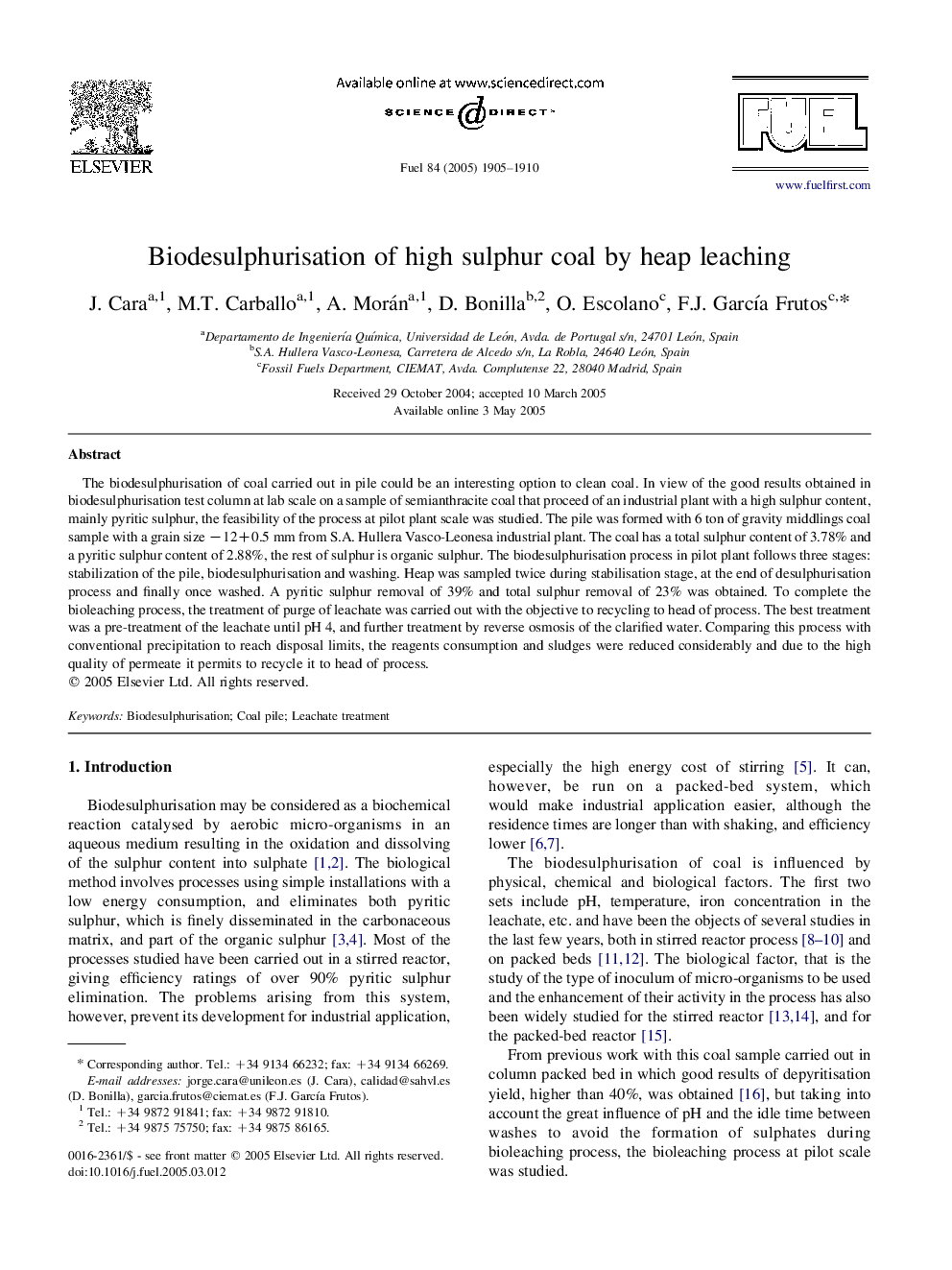| Article ID | Journal | Published Year | Pages | File Type |
|---|---|---|---|---|
| 9629091 | Fuel | 2005 | 6 Pages |
Abstract
The biodesulphurisation of coal carried out in pile could be an interesting option to clean coal. In view of the good results obtained in biodesulphurisation test column at lab scale on a sample of semianthracite coal that proceed of an industrial plant with a high sulphur content, mainly pyritic sulphur, the feasibility of the process at pilot plant scale was studied. The pile was formed with 6Â ton of gravity middlings coal sample with a grain size â12+0.5Â mm from S.A. Hullera Vasco-Leonesa industrial plant. The coal has a total sulphur content of 3.78% and a pyritic sulphur content of 2.88%, the rest of sulphur is organic sulphur. The biodesulphurisation process in pilot plant follows three stages: stabilization of the pile, biodesulphurisation and washing. Heap was sampled twice during stabilisation stage, at the end of desulphurisation process and finally once washed. A pyritic sulphur removal of 39% and total sulphur removal of 23% was obtained. To complete the bioleaching process, the treatment of purge of leachate was carried out with the objective to recycling to head of process. The best treatment was a pre-treatment of the leachate until pH 4, and further treatment by reverse osmosis of the clarified water. Comparing this process with conventional precipitation to reach disposal limits, the reagents consumption and sludges were reduced considerably and due to the high quality of permeate it permits to recycle it to head of process.
Related Topics
Physical Sciences and Engineering
Chemical Engineering
Chemical Engineering (General)
Authors
J. Cara, M.T. Carballo, A. Morán, D. Bonilla, O. Escolano, F.J. GarcÃa Frutos,
